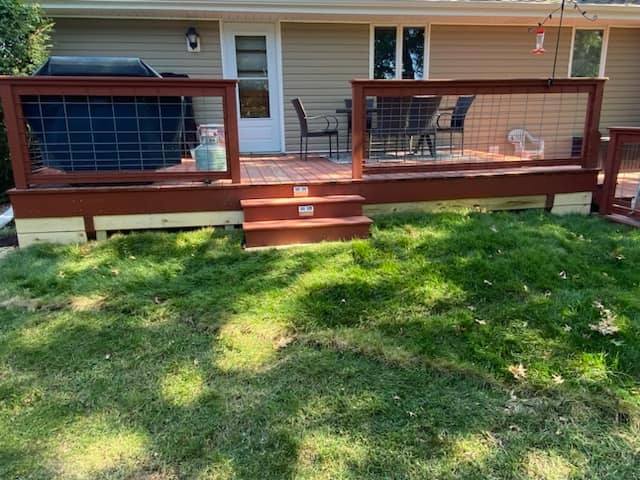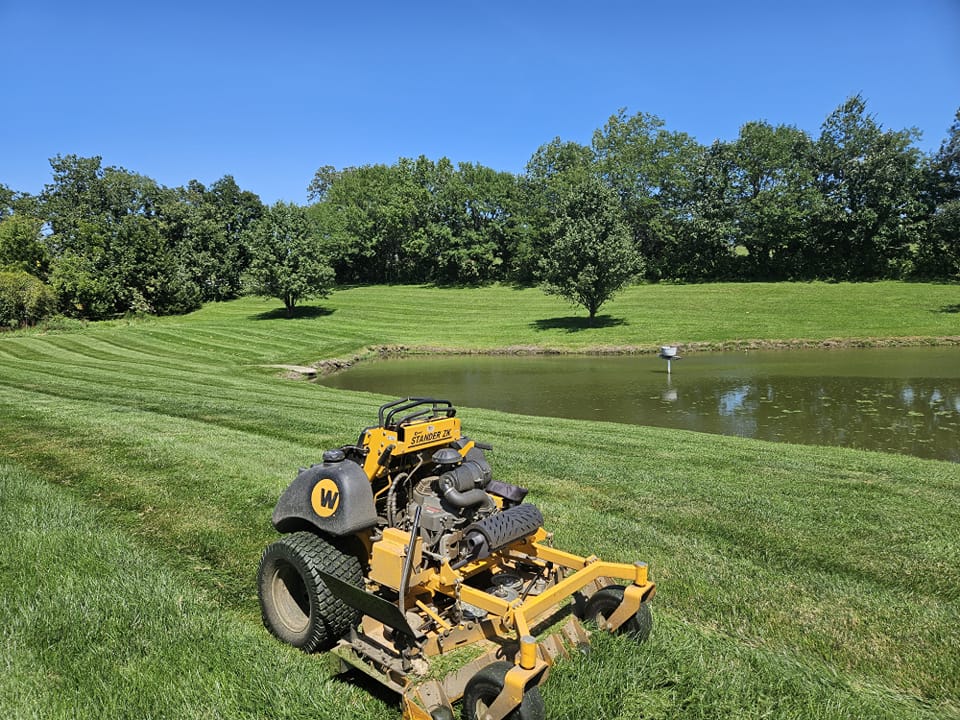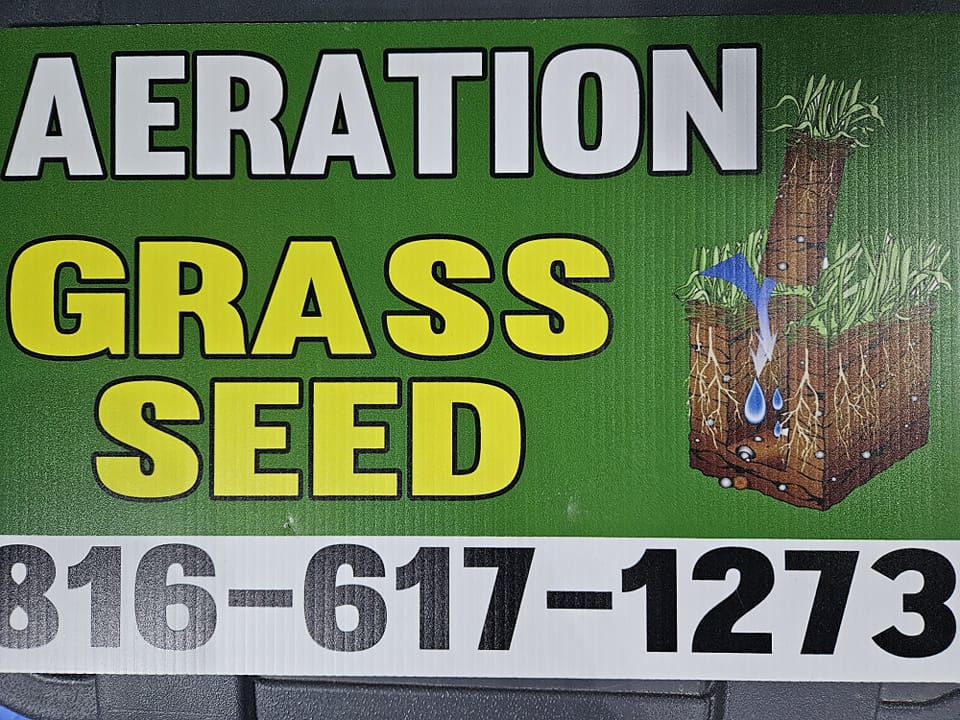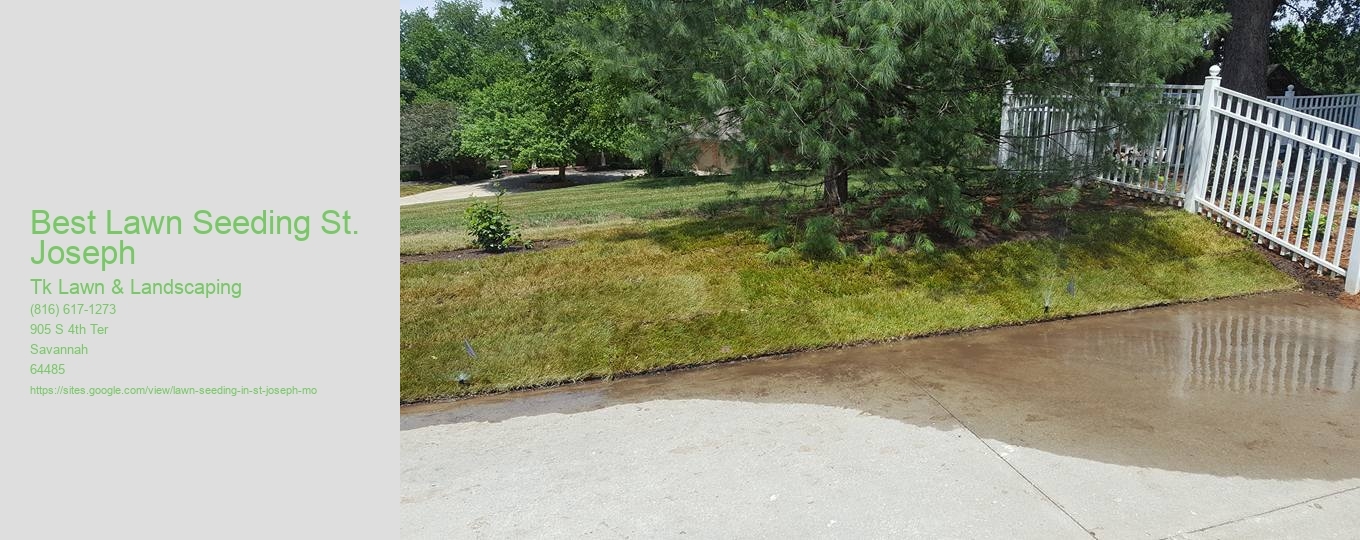Factors to Consider When Choosing Lawn Seed in St. Lawn Seeding St. Joseph MO . Joseph
When embarking on the journey to achieve a lush and vibrant lawn in St. Joseph, choosing the right lawn seed is a critical step that can greatly influence the health and appearance of your turf. The region's unique climate, soil conditions, and your specific lawn needs all play a role in determining the best seed for your yard. Here are several important factors to consider when selecting lawn seed in St. Joseph.
First and foremost, climate compatibility is crucial.
Best Lawn Seeding St. Joseph - Sod installation near me St Joseph MO
- Sod installation near me St Joseph MO
- Professional lawn seeding St Joseph MO
Soil type in your area is another critical factor to consider. Conducting a soil test can provide valuable insights into the pH level and nutrient content of your lawn, allowing you to select a seed that will perform well in your specific soil conditions. For instance, if your soil is sandy and well-drained, you might choose a seed mix that contains drought-resistant varieties. On the other hand, if your soil is clay-heavy and retains moisture, selecting a seed that tolerates wet conditions will be beneficial.
The intended use of your lawn also plays a significant role in seed selection. If your lawn will experience heavy foot traffic from children or pets, opt for durable grass varieties such as perennial ryegrass, which is known for its resilience and quick germination. Conversely, if your lawn is more decorative and will not be subjected to much wear and tear, finer-bladed grasses like fine fescues can provide a soft and aesthetically pleasing turf.
Sunlight exposure is another key consideration. Some areas of your lawn may receive full sun, while others are shaded by trees or buildings. It's important to choose a seed mix that accommodates varying light conditions. Sun-loving grasses like Bermudagrass are suitable for areas with abundant sunlight, while shade-tolerant varieties like tall fescue are better for areas with limited sunlight.
Finally, consider the maintenance level you are willing to commit to. Different grass types have varying maintenance needs in terms of mowing frequency, watering, and fertilization. If you prefer a low-maintenance lawn, look for seed varieties that are drought-resistant and require less frequent mowing.

In conclusion, selecting the right lawn seed in St. Joseph involves considering a combination of climate, soil type, intended use, sunlight exposure, and maintenance preferences. By taking these factors into account, you can choose a seed blend that will establish a healthy, resilient, and beautiful lawn that enhances the natural beauty of your home. With the right choice, your lawn can become a source of pride and enjoyment for years to come.
Step-by-Step Guide to Seeding Your Lawn
Creating a lush, green lawn is a dream for many homeowners in St. Joseph, and achieving this begins with proper seeding. Whether youre starting from scratch or revitalizing an existing patch, seeding is a crucial step in ensuring a healthy and vibrant lawn. Heres a step-by-step guide to help you navigate the process and transform your outdoor space into a verdant oasis.
First, its essential to plan your project by selecting the right time for seeding. In St. Joseph, the best time to seed your lawn is during the late summer to early fall. This period offers warm soil temperatures, which are conducive to seed germination, and cooler air temperatures, which reduce the stress on new seedlings. Additionally, fall typically brings more rainfall, ensuring that your new seeds receive ample moisture.
Once youve identified the right time, the next step is to prepare the soil. Start by removing any debris, such as rocks, sticks, and old turf. You may need to till the soil to a depth of about 6 inches to ensure its loose and well-aerated. This promotes root growth and allows the seeds to establish themselves more effectively. After tilling, its a good idea to test the soils pH level. Most grasses thrive in a pH level between 6.0 and 7.0. If necessary, amend the soil with lime or sulfur to adjust the pH to the optimal range.

With the soil prepared, its time to choose the right seed. The climate in St. Joseph and the specific conditions of your lawn, such as sunlight exposure and foot traffic, should inform your choice of grass seed. Kentucky bluegrass, perennial ryegrass, and fescue are popular choices for their adaptability and resilience. Consider a seed blend that combines these varieties to ensure a robust and resilient lawn.
Sowing the seeds is the next critical step. Use a broadcast spreader for even distribution, ensuring that you cover the entire area uniformly. Its important to follow the recommended seeding rate on the seed package to avoid overcrowding, which can lead to competition for resources and poor growth. After spreading the seeds, lightly rake the soil to ensure good seed-to-soil contact.
Watering is perhaps the most crucial aspect of the seeding process. Newly seeded lawns need consistent moisture to encourage germination. Water the area lightly but frequently, aiming to keep the soil consistently damp but not waterlogged. Once the seeds begin to germinate and the grass starts to grow, gradually reduce the frequency of watering while increasing the amount of water per session to encourage deep root growth.
Finally, be patient and give your new lawn time to establish itself. Avoid heavy foot traffic on the newly seeded area and wait until the grass reaches about 3 inches in height before mowing. When you do mow, set your mower blade to the highest setting to avoid stressing the young grass.
By following these steps and being diligent in your care, youll be well on your way to achieving a lush, green lawn in St. Joseph. Not only will this enhance your homes curb appeal, but it will also provide a beautiful space for relaxation and outdoor activities. With a bit of effort and attention, your lawn can be the envy of the neighborhood.

Optimal Timing for Lawn Seeding in St. Joseph
When it comes to achieving a lush, green lawn in St. Joseph, understanding the optimal timing for seeding is crucial. The climate in St. Joseph presents unique challenges and opportunities for lawn care enthusiasts, making it essential to time the seeding process just right for the best results.
St. Joseph experiences a climate that is a mix of humid continental and humid subtropical, characterized by hot summers and cold winters with moderate precipitation throughout the year. These conditions dictate that the best time for lawn seeding is typically during the late summer to early fall. Specifically, late August through mid-September is often considered the ideal window for lawn seeding in this region.
Seeding during this period allows grass to establish roots before the onset of winter. The soil remains warm from the summer heat, which aids in faster germination, while the cooler air temperatures reduce stress on young grass seedlings. Additionally, fall often brings more consistent rainfall, which helps to keep the soil moist and provides the necessary hydration for seed growth.
Spring seeding is another option, though it comes with its own set of challenges. While spring offers favorable growing conditions, weeds are also more likely to thrive, leading to increased competition for nutrients and water.
Best Lawn Seeding St. Joseph -
- Full yard sod job St Joseph MO
- Drains for soggy lawns St Joseph MO
- growth help St Joseph MO Grass growth help St Joseph MO helps your grass stand tall like it just got promoted
To optimize lawn seeding efforts, its important to prepare the soil properly. This involves removing any debris, loosening the soil, and ensuring proper drainage. A soil test can also be beneficial to determine if any amendments are needed to adjust pH levels or nutrient content. Choosing the right grass variety suited to the climate and specific conditions of your lawn is another critical factor in achieving success.
In conclusion, the optimal timing for lawn seeding in St. Joseph is crucial for a healthy and vibrant lawn. By seeding in late summer to early fall, homeowners can take full advantage of the favorable growing conditions, ensuring that their grass establishes well before winter. With the right preparation and timing, you can enjoy a beautiful lawn that enhances the aesthetic appeal and value of your property.
Maintenance Tips After Seeding Your Lawn
Seeding your lawn can be an exciting endeavor, especially when you envision the lush, green carpet that will eventually grace your outdoor space. For residents of St. Joseph, where the climate and soil conditions are ideal for a variety of grass types, proper maintenance after seeding is crucial to ensure successful germination and robust growth. The following tips will help you nurture your lawn from the moment you spread those seeds until they establish into a vibrant, healthy lawn.
First and foremost, watering is the most critical aspect of post-seeding care. Newly seeded lawns require consistent moisture to germinate effectively. Its essential to water lightly but frequently to keep the soil consistently damp. This might mean watering two to three times a day, depending on the weather conditions. Avoid creating puddles, as too much water can wash away seeds or promote fungal diseases. Early mornings and late afternoons are ideal times for watering, as this helps minimize water evaporation and ensures maximum absorption.
In addition to watering, protecting the seeds from harsh weather and pests is vital. Birds can be particularly attracted to freshly sown seeds, so consider using a light layer of straw mulch to cover the area. This mulch not only deters birds but also helps retain moisture and moderate soil temperatures. If straw is unavailable, a seed starter blanket or netting can serve a similar purpose, providing a protective barrier while allowing sunlight and rainwater to reach the seeds.
Mowing is another crucial step in maintaining your newly seeded lawn. However, patience is key. Avoid mowing until the grass has reached a height of about 3 to 4 inches. Cutting too early can stress young grass and hinder its development. When you do mow for the first time, ensure your mower blades are sharp and set to a high setting to avoid cutting more than a third of the grass height. This approach minimizes stress on the new grass and encourages deep root growth.
Fertilization can enhance the growth of your seeded lawn, but timing is everything. Its best to wait until the grass has grown at least three inches tall before applying any fertilizer. Utilize a starter fertilizer that is high in phosphorus, as this nutrient supports strong root development. Be cautious not to over-fertilize, as excessive nutrients can damage tender young grass and lead to nutrient runoff.
Finally, be mindful of foot traffic on your newly seeded lawn. Until the grass is well-established, minimize walking on the area to prevent compacting the soil and damaging delicate roots. If access to the area is necessary, consider laying down temporary pathways or stepping stones to distribute weight and reduce impact.
By following these maintenance tips, youll give your newly seeded lawn in St. Joseph the best chance to thrive. With consistent care and attention, youll soon enjoy a lush, vibrant lawn that not only enhances the beauty of your property but also provides a welcoming space for relaxation and recreation. Remember, patience and persistence are key, and the effort you invest now will pay off in the form of a healthy, resilient lawn for years to come.
